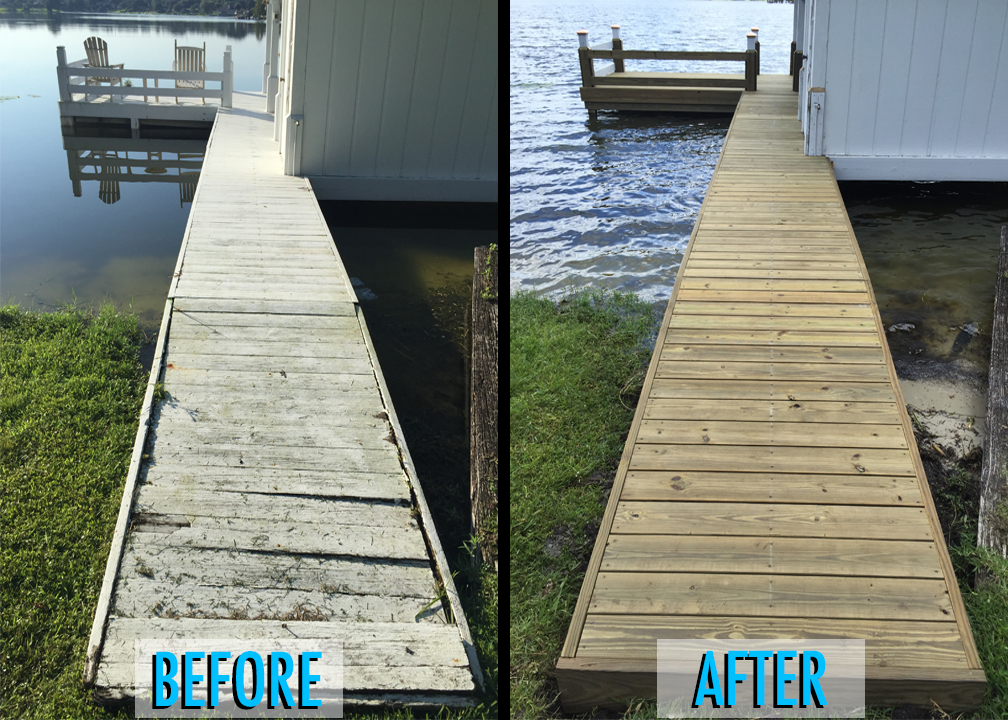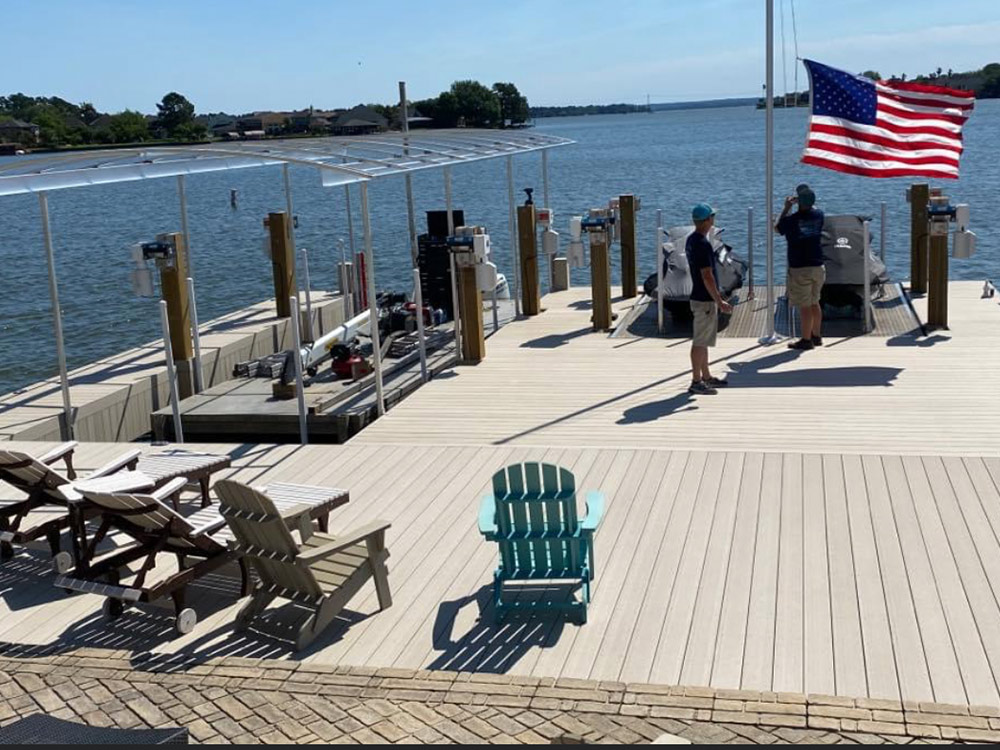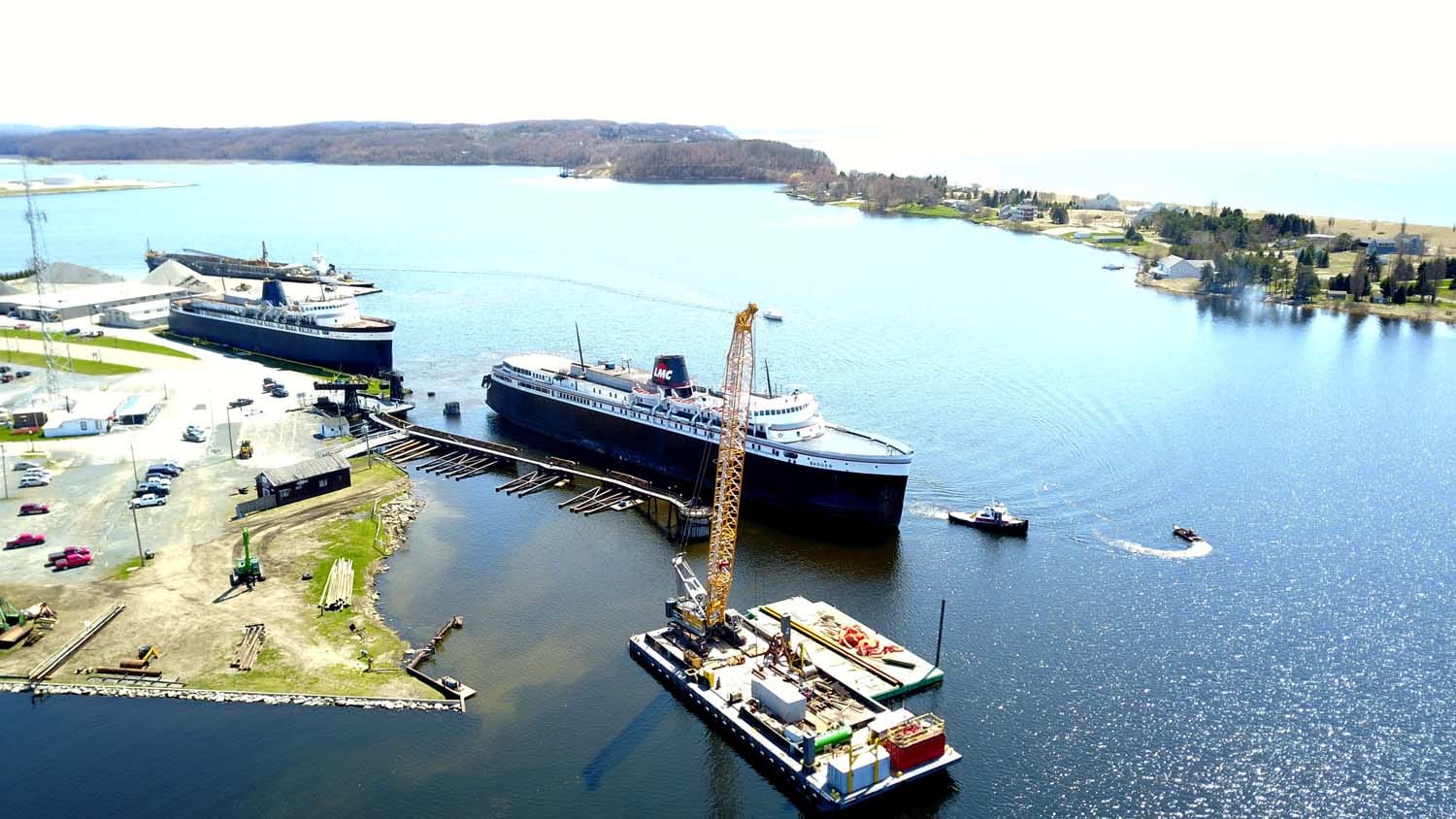How to Pick the Right Solution for Your Dock Repairs
How to Pick the Right Solution for Your Dock Repairs
Blog Article
Exactly How to Address Common Dock Repair Work Issues for Safe Water Tasks

Identifying Common Dock Issues
Identifying typical dock problems is crucial for keeping the functionality and safety and security of your waterfront building. Routine assessments can aid reveal issues before they come to be severe, making sure both the durability of the dock and the safety and security of those that use it. One widespread concern is loosened or rusty bolts. Gradually, screws, bolts, and other bolts can end up being loosened as a result of continuous exposure to water and climate aspects, causing architectural instability.
One more common issue is the deterioration of flotation devices. These gadgets are essential for maintaining the dock buoyant, and any kind of damage or leaks can cause the dock to listing or sink. Regularly checking for leakages or waterlogged floats can preempt much more considerable concerns.
Additionally, algae and barnacle buildup on the dock's surface can develop dangerous and slippery conditions. This biofouling not only positions a danger to users but can additionally speed up the deterioration of the dock materials.
Lastly, checking for signs of corrosion on metal parts is crucial. Rust can jeopardize the stability of the dock's framework, making it hazardous. By routinely identifying these common dock issues, you can guarantee that your dock stays protected and useful for several years to come.
Fixing Rotting Wood
When attending to the concern of deteriorating timber on your dock, it is essential to act promptly to stop more damage. Begin by extensively evaluating the entire structure to recognize all affected areas. Utilize a screwdriver to penetrate the wood; if it sinks in easily, the timber is likely deteriorated and needs immediate attention.
Be sure to cut back to healthy, solid wood, guaranteeing you get rid of all jeopardized product. After elimination, treat the staying wood with a wood chemical to avoid future rot.
Following, change the eliminated areas with marine-grade lumber or pressure-treated timber, which are more resistant to water damage. Safeguard the brand-new items with galvanized or stainless-steel fasteners to stop rust. In addition, applying a waterproof sealer to the brand-new timber can offer an added layer of protection.
Safeguarding Loose Boards
Just how do you guarantee your dock stays practical and secure for all its individuals? One critical element is securing loosened boards, which can otherwise present significant risks. Loosened boards not just raise the risk of tripping yet can also jeopardize the structural stability of the whole dock.

For reinstallation, make use of galvanized or stainless steel screws, get more as these products provide exceptional resistance to deterioration in marine environments. Ensure the screws are long enough to penetrate deep right into the underlying assistance framework, but not as long that they protrude via the dock's surface. Pre-drilling pilot holes can assist protect against the timber from splitting.
Lastly, keep a regular assessment routine to determine and deal with any kind of brand-new concerns quickly. By safeguarding loose boards successfully, you add to the general safety and durability of your dock, making it a reliable system for water tasks.
Maintaining Unsteady Pilings
Making sure the stability of unstable pilings is extremely important to keeping a secure and functional dock. Unstable pilings can jeopardize the whole structure, posing considerable risks to individuals and possibly resulting in pricey fixings. The very first step in stabilizing these vital elements is an extensive evaluation. Analyze the pilings for indications of rot, damage, or moving. Utilize a degree to inspect for vertical positioning and ensure they are driven deep sufficient into the substratum to provide sufficient support.
If the pilings are discovered to be unsteady, one effective method for support is using added bracing. Cross-bracing with treated lumber or galvanized metal can dramatically boost stability. Support the dental braces safely to both the pilings and the dock framework to distribute lots equally.

Normal maintenance and routine reassessment of the pilings' security are crucial to ensuring long-term dock security and capability.
Changing Rusty Equipment
Resolving unstable pilings is just one facet of preserving a dock's honesty; one more critical issue is changing rusty equipment. Over time, direct exposure to dampness and salt can lead to the oxidation and rust of screws, braces, and screws, jeopardizing the entire structure's security. Regular evaluation for rust is vital, particularly after severe climate or seasonal adjustments.
When rustic equipment is determined, immediate activity is called for. Begin by choosing marine-grade stainless-steel or galvanized equipment, both designed to stand up to the harsh aquatic environment. Make sure that you have the suitable devices, such as screwdrivers and wrenches, to safely remove the old, rusty pieces without creating additional damages to the dock.
After eliminating the rustic hardware, completely tidy the affected areas to remove any recurring corrosion or debris. Use a rust-inhibiting primer to revealed metal surfaces prior to mounting the brand-new hardware. Tighten all components securely to stop future helping to loosen, and occasionally check the installations to ensure recurring stability.
Replacing rusty equipment not only extends the dock's lifespan yet also considerably boosts the security of water activities. By proactively managing corrosion, you secure both the framework and its customers, making certain a pleasurable and protected waterfront experience.
Conclusion
Regular examinations and maintenance are vital to resolve usual dock repair service issues and make sure risk-free water activities. Such positive measures add to the overall safety and security and performance of dock structures, fostering a secure setting for water-based tasks.
Guaranteeing the safety and security of water tasks hinges dramatically on the proper maintenance and repair of docks (Dock Repairs). These devices are crucial for maintaining the dock buoyant, and any kind of damages or punctures can create the dock to listing or sink. By routinely identifying these typical dock issues, you can make certain that your dock remains useful and protected for years to come
Making sure the security of unstable pilings is critical to maintaining a practical and secure dock.Regular examinations and maintenance are necessary to attend to typical dock repair work issues and make certain risk-free water tasks.
Report this page